Beginning in the 1920s, a period of significant intellectual and cultural impact took place in Harlem, New York, known as the Harlem Renaissance. Following the end of the Civil War in 1865, hundreds of thousands of African Americans who were once enslaved were now lawfully free—and yet, they were entering a social sphere that hadn't changed to accept them. By the late 1870s, white supremacy was rampant in the South, with racial segregation laws known as Jim Crow and hate groups like the Ku Klux Klan.
Therefore, many African Americans decided their hopes for equality and freedom lay beyond the South, and relocated to cities like Chicago, Los Angeles, Detroit, Philadelphia, and New York during the Great Migration. The Harlem section in particular of Manhattan saw the arrival of over 175,000 African Americans and quickly became a destination for Black people of all backgrounds. There, a new mode of expression was developed—whether in the form of music, prose, poetry, or dance—to redefine the Black experience in America.
The authors highlighted in this list are just a few of many who harnessed their narratives, challenging issues like racial inequality, stereotypes, and discrimination, seeking, instead, political and cultural change. Beginning with W. E. B. Du Bois' The Souls of Black Folk—which was not born from the movement but served as a catalyst—there are several other nonfiction titles included on this list, to spark further learning of this crucial moment in history, that has continued to inspire artists around the world.
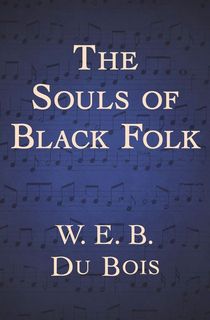
The Souls of Black Folk
Drawing on his own experience as an African American, Du Bois explores the difficulty and importance of understanding the history of Black Americans through a multi-disciplinary lens. In this groundbreaking work, the leader of the Black intellectual movement uncovers not only the trauma of the Reconstruction movement but that of his ancestors.
Du Bois begins by proposing that "the problem of the Twentieth Century is the problem of the color-line," and then unpacks a term he proposes, double consciousness. Meaning that he, and other Black individuals, always see themselves twice, once from their own eyes and then from the eyes of others, which has come to be foundational in understanding race in America.
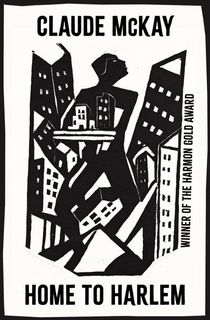
Home to Harlem
In what has become viewed as a classic Harlem Renaissance novel, from a defining figure of the movement, McKay follows Jake Brown, a Black American longshoreman, who has recently returned from service in World War I. Initially, when Jake joined the fight, he expected to be treated like a hero.
That is, until he arrived in France, where he is forced to carry lumber and defend himself against white comrades. Upon returning to the States, Jake hopes to settle down, but finds it difficult to do so when haunted by his violent past. Still, he searches for friendship, work, and above all, love.

The New Negro
An anthology of fiction, poetry, and essays, this comprehensive collection includes work from some of the movement's most influential voices, such as Langston Hughes, W. E. B. Du Bois, Zora Neale Hurston, Claude McKay, Walter White, and more.
Edited by Alain Locke, who became known as the Dean, or philosophical architect of the Harlem Renaissance, the collection chronicles how these intellectuals, activists, and creatives changed the socio-cultural fabric of America.
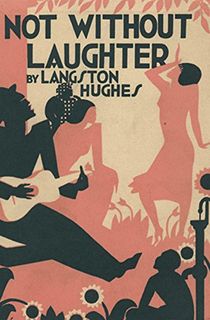
Not Without Laughter
Langston Hughes was a creative in many regards, from prose to playwriting, but his first collection of poems, The Weary Blues, is unforgettable. The collection is separated into seven sections and follows the career of a young artist in the wake of the Harlem Renaissance.
The title poem, "The Weary Blues," follows the style of jazz poetry, which Hughes was a pioneer of, meaning that it embodies the feel of music in a very lyrical flow. Other poems include "The Negro Speaks of Rivers," "Danse Africaine," "Mother to Son," and "Winter Moon," all capturing the Black experience of the time.
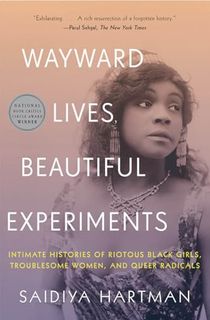
Wayward Lives, Beautiful Experiments
Winner of the 2019 National Book Critics Circle Award in Criticism, Wayward Lives follows the private lives and revolution of young Black women in Philadelphia and New York during the early twentieth century.
These women, for the first time, participated in not only the shaping of their own lives, but of the larger cultural movement, by forming intimacies not dictated outside the bounds of society. They fell in love, had brief flings, and found new ways to engage with desire, as revealed in this well-researched history.

Their Eyes Were Watching God
Considered to be Hurston's best-known work and a landmark of the movement, Hurston follows Janie Crawford, an African-American woman in her forties. The novel starts with her return to her old town following a year-long absence, where she recounts her life story to her friend Phoebe. Chronicling three marriages, Janie recounts her beginnings as a naive youth, to the sexual awakening of her adulthood—as she, ultimately, strives to be in control of her own destiny.
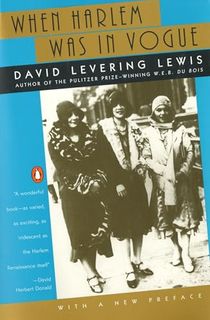
When Harlem Was in Vogue
What the New York Times Book Review called "A major study...one that thoroughly interweaves the philosophies and fads, the people and movements," of the Harlem Renaissance, Lewis distills the excitement generated from the period. It was a time, finally, where African Americans could make art that was not only appreciated but heralded, and as seen today, its impact has continued to resonate.
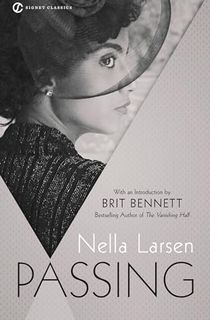
Passing
Now the material for the 2021 film of the same name, starring Tessa Thompson and Ruth Negga, Passing, chronicles two friends who are both light-skinned, living contrary lives. Irene Redfield is thriving, living in the blooming neighborhood of Harlem with her family. But when she reconnects with her childhood friend, Clare Kendry, she learns she has been passing as a white woman, hiding the truth of her background from her racist husband.
Clare soon finds herself drawn to Irene, the way she champions her Black identity, while Irene is repulsed by Clare's choice to live a lie. Soon, Clare attempts to weasel her way into Irene's life, bringing along her deception with her.

Cane
Jean Toomer, in this trailblazing fiction, offers a rich picture of African American life in the South during the Harlem Renaissance. Through the unconventional approach of connected fragments—whether it be sketches, poems, or stories—Toomer does away with genre, to instead ask the reader to consider diverse perspectives and characters.
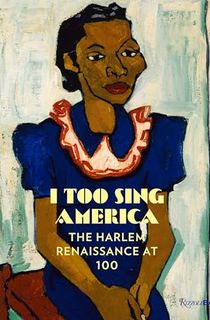
I Too Sing America: The Harlem Renaissance at 100
A significant study on the artistic and material movement of the 1920s, I Too Sing America offers a cohesive look into the people, social history, music, and art of the era. Including works from beloved artists such as Romare Bearden, Allan Rohan Crite, and Palmer Hayden, celebrated biographer Hagwood embarked on decades of research to compile this wonder.
Separated into thematic chapters and accomplished through joint publication with the Columbus Museum of Art, Hagwood captures not only the depth of the Harlem Renaissance but the talent behind it that brought the movement to life.
Featured image: The New York Public Library Digital Collections / Unsplash






